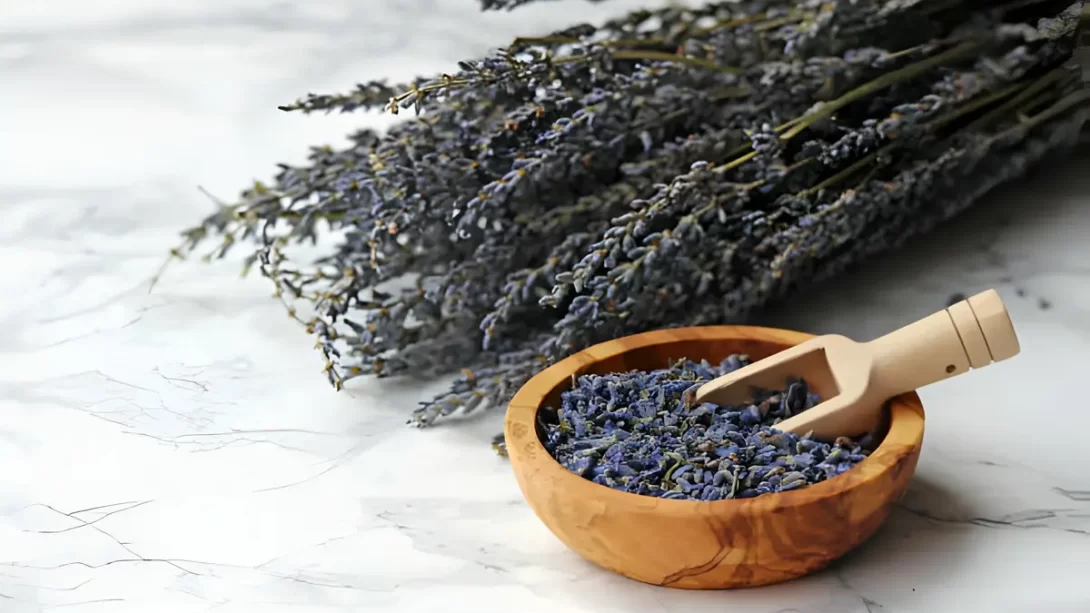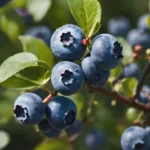Lavender, with its enchanting fragrance and myriad uses, is a cherished herb in many households. Drying lavender is a popular method to preserve its scent and properties for extended use. This article aims to explore the shelf life of dried lavender and how to best preserve its quality over time, ensuring you can enjoy its soothing benefits long after the blooms have faded.
Dried Lavender
The process of drying lavender involves removing moisture from the flowers and stems, which helps in preserving its fragrance and medicinal properties. Dried lavender can be found in various forms, including whole buds, stems, and powdered form. Each form has its specific uses; buds are often used in sachets and potpourri, stems can be burnt like incense, and powdered lavender is used in cooking and homemade skincare products.
Dried lavender is valued for its lasting fragrance and is a staple in aromatherapy. It’s also used in culinary applications, lending a floral, slightly sweet flavor to dishes, and as a decorative element in homes due to its appealing look and scent.
Factors Affecting the Longevity of Dried Lavender
The longevity of dried lavender is influenced by several key factors, starting with the drying process itself. Properly dried lavender, where moisture is thoroughly removed without damaging the essential oils, tends to last longer.
Storage conditions play a crucial role in the shelf life of dried lavender. Factors like humidity, light, and temperature can significantly affect its quality over time. For instance, high humidity can lead to mold growth, while excessive light and heat can cause the lavender to lose its color and fragrance more rapidly.
Optimal Storage Conditions for Dried Lavender
To maximize the shelf life of dried lavender, it should be stored in conditions that protect it from moisture, light, and extreme temperatures. The ideal storage solution is an airtight container placed in a cool, dark place. Glass jars, metal tins, or even sealed plastic bags can serve well for this purpose. It’s important to ensure the container is completely dry before adding the lavender to prevent any mold growth.
Storing dried lavender away from direct sunlight is also essential. Sunlight can bleach the vibrant color of the lavender and diminish its aromatic qualities. Similarly, areas with significant temperature fluctuations or high humidity are not suitable for storing dried lavender.
Signs of Deterioration in Dried Lavender
Recognizing when dried lavender has lost its potency is key to ensuring its best use. Over time, dried lavender may show signs of deterioration, which can affect its fragrance and efficacy. One of the first signs is a noticeable decrease in its aroma. If the lavender’s scent becomes faint or has altered significantly, it may be losing its essential oils, which are responsible for its fragrance.
Visually, lavender that is past its prime may exhibit color changes. Freshly dried lavender typically has a vibrant purple hue, which fades to a grayish tone as it ages. Additionally, any presence of mold or mildew, often resulting from improper storage conditions, is a clear indicator that the lavender is no longer good for use.
Maximizing the Use of Dried Lavender
Dried lavender can still be useful even as it begins to age. For instance, older lavender, though less fragrant, can still be used in drawer sachets, providing a mild scent to linens and clothing. It can also be used in making infused oils or vinegars, where the subtler fragrance is not a drawback.
If the scent of dried lavender has diminished, you can try reviving it by gently crushing the buds. This action can release any remaining oils, enhancing the fragrance temporarily. However, this is often a short-term solution, and eventually, the lavender will need to be replaced.
For culinary purposes, older dried lavender can still be used, although it may have a milder flavor. It’s ideal for dishes where a subtle hint of lavender is desired, rather than a strong flavor.
Shelf Life Expectations
The shelf life of dried lavender can vary, but under optimal storage conditions, it can last anywhere from one to three years. The form of the lavender also plays a role in its longevity; whole buds tend to preserve their oils and scent longer than powdered lavender.
As a general guideline, it’s advisable to replace dried lavender every one to two years to ensure the best quality, especially for uses like aromatherapy where potency is crucial. Keeping track of when you dried or purchased the lavender can help in determining when it’s time to replace it.
Conclusion
Dried lavender, treasured for its enchanting fragrance and versatility, can last quite a while when stored correctly. To recap, the key to prolonging its shelf life lies in proper drying and optimal storage conditions. An airtight container in a cool, dark place is ideal for preserving its aromatic and visual qualities.
It’s important to stay vigilant for signs of deterioration, such as a faded scent, color changes, or the presence of mold. Even as dried lavender ages, it can still be useful in various applications, from culinary to decorative, albeit with a milder potency.
Regularly checking and refreshing your stock every one to two years ensures you always have high-quality lavender at your disposal. This practice is especially crucial for applications where the strength of aroma and flavor is paramount, like in aromatherapy or cooking.



